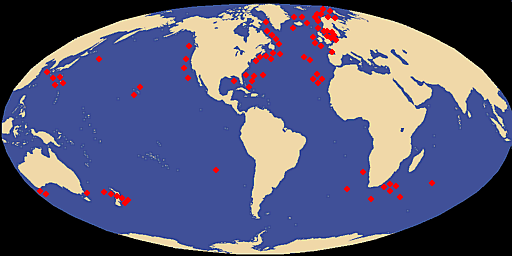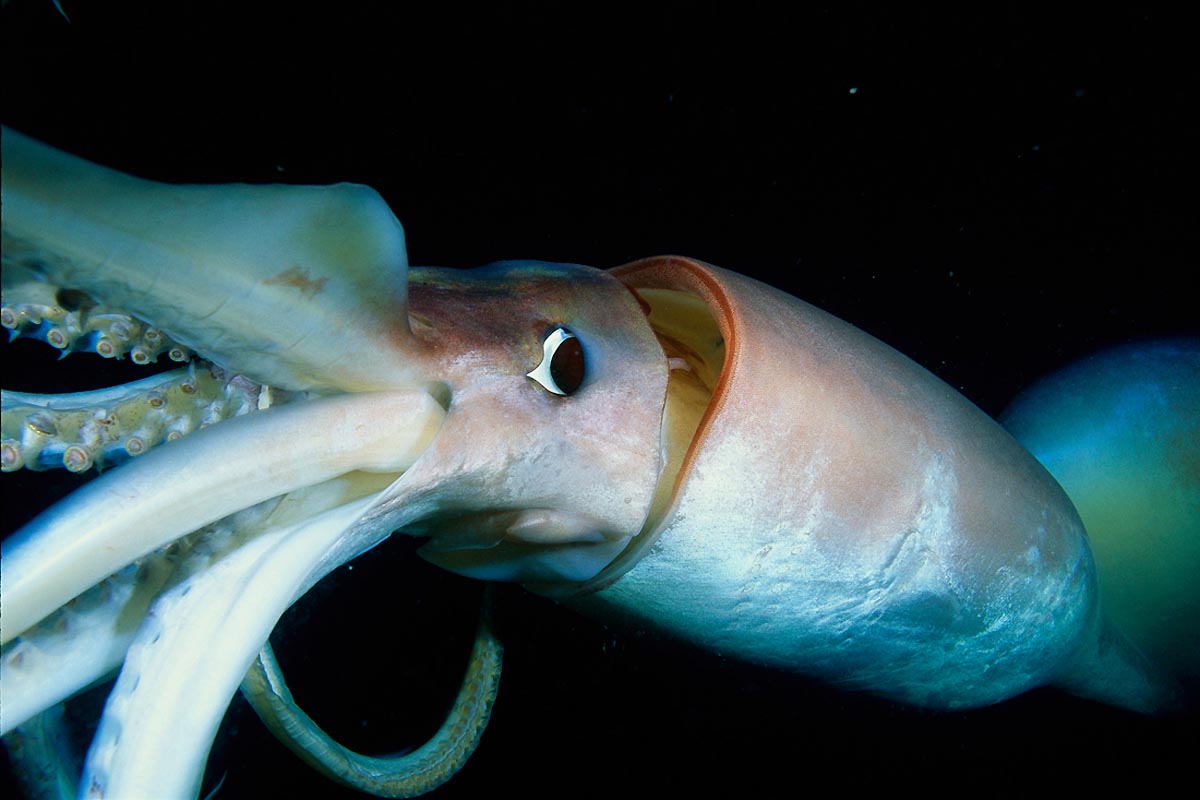
Habitat
Humboldt squid (Dosidicus gigas) got its name from its main
location – the Humboldt Current.
They tend to live at depths of 660 to 2300 feet in the Eastern
Pacific. Light is also an important factor in determining daytime
depth, and temperature can limit nighttime depth. Vertical
velocities were compared over specific depth ranges characterized by
large differences in dissolved oxygen. Velocities were
generally reduced under OMZ conditions, with faster jetting being
strongly affected. These squid range from all over the
world, their habitats take span from California to the southern tip
of South America. D.gigas are typically found traveling in schools
called shoals of 1,200 or even more.

Just recently Humboldts have been spotted as far north as Alaska. This raises the question of why would they travel so far north when their natural habitat is in the warmer waters. A few theories have been hypothesized such as overpopulation, causing the squid to increase their range of habitats. Overpopulation could be caused by the lack of its natural predators, sharks, swordfish, bluefin tuna, and sperm whales. D. gigas have an important role in the ocean ecosystem, serving as a top prey for some of these predators, which shares the concern for what is happening to the predators. (marinebio.org) Another theory is the warming of ocean waters. Resulting in the squid to get more comfortable with the waters and expand their domains. (nationalzoo.si.edu)
Humboldt squid like many other types of cephalopods can change
colors in order to blend into their habitats, hide from predators,
or perform a sneak attack on its prey. The magic of the color
cha nging
ability lies within the squids cells. They have special pigment
cells called chromatophores. By controlling the size of these cells
they can vary their color pattern which can be almost limitless. The
chromatophores are connected to the nervous system, and their size
is determined by muscle contractions within the body. Because they
can not determine color with their eyes(as far as we know) it is
still a mystery on how they match the colors of their environments
so perfectly. Some cephalopods can even match the pattern of the
object in which it is hiding in. (Prager et al., 2000)
nging
ability lies within the squids cells. They have special pigment
cells called chromatophores. By controlling the size of these cells
they can vary their color pattern which can be almost limitless. The
chromatophores are connected to the nervous system, and their size
is determined by muscle contractions within the body. Because they
can not determine color with their eyes(as far as we know) it is
still a mystery on how they match the colors of their environments
so perfectly. Some cephalopods can even match the pattern of the
object in which it is hiding in. (Prager et al., 2000)